Dayun Yuan Zhuozhang: The Serene Oasis for Nature Lovers and History Buffs

An Essential Guide to Visiting Dayun Yuan Zhuozhang
In This Guide
- An Essential Guide to Visiting Dayun Yuan Zhuozhang
- The Rich History and Legends of Dayun Yuan Zhuozhang
- Main Highlights: What You Absolutely Can’t Miss
- Planning Your Visit: A Practical Guide
- Tickets: Prices, Booking, and Tips
- How to Get There: A Complete Transportation Guide
- Local Cuisine and Accommodation Nearby
- Frequently Asked Questions
- Final Thoughts on Your Trip
Nestled within the enchanting Zhuozhang River Valley in Shanxi Province, Dayun Yuan Zhuozhang (大云院浊漳) stands as a testament to China’s rich architectural heritage and spiritual history. As one of the most significant sites from the Five Dynasties and Song Dynasties, this ancient temple complex beckons travelers who wish to explore the intricate tapestry of Chinese culture, art, and religion.
Visitors to Dayun Yuan Zhuozhang are treated to a visual feast of stunning murals and architectural marvels. The temple, renowned for its exquisite Amitabha Hall, showcases some of the earliest existing Pu Pai Fang, a unique architectural feature indicative of its historical significance. The hall’s beautifully preserved murals whisper tales of the past, inviting you to envision the monks who once gathered here in solemn meditation.
As you wander the serene grounds, you’ll also encounter the Seven Treasures Pagoda, a striking structure from the Later Zhou Dynasty, which adds to the temple’s charm. Each corner of the complex offers a glimpse into the spiritual life of the era, making it a perfect spot for introspection and appreciation of the craftsmanship that has stood the test of time.
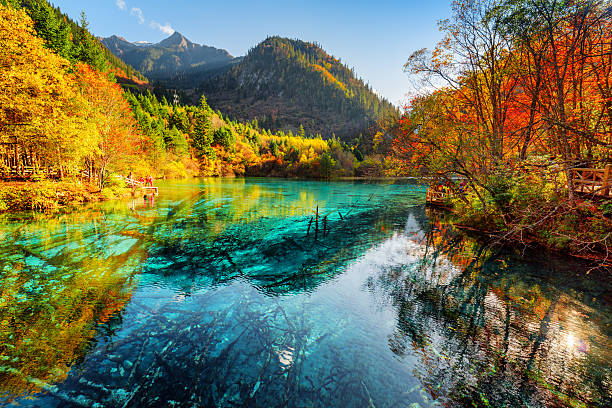
Dayun Yuan Zhuozhang.
The Zhuozhang River Valley itself is a treasure trove of ancient buildings, with Dayun Yuan Zhuozhang being just one highlight among many. This area boasts the highest concentration of protected structures from the Five Dynasties to the Jin Dynasty in China, making it a vital pilgrimage for history enthusiasts and culture seekers alike.
Whether you’re an avid historian, a curious traveler, or someone simply seeking tranquility away from the bustling cities, Dayun Yuan Zhuozhang promises an experience steeped in history and beauty, surrounded by breathtaking natural landscapes. As you prepare for your visit, let the allure of this hidden gem guide you through the echoes of ancient China.
The Rich History and Legends of Dayun Yuan Zhuozhang
Nestled in the picturesque Zhuozhang River Valley of Shanxi Province, Dayun Yuan Zhuozhang (大云院浊漳) stands as a testament to the rich tapestry of Chinese history and culture. This ancient temple complex, primarily known for its stunning architecture and the remnants of its vibrant past, invites travelers to explore the intertwining narratives of faith, artistry, and regional heritage.

Dayun Yuan Zhuozhang.
Historical Significance
Dayun Yuan Zhuozhang dates back to the Later Jin Dynasty during the tumultuous period of the Five Dynasties (907-960 AD). It is renowned for housing the Amitabha Hall, which is considered a textbook example of architectural brilliance from this era. Within this hall, visitors can admire some of the earliest surviving murals of the Pu Pai Fang, a style that showcases the fusion of Buddhist themes with the regional artistic sensibilities of the time.
The temple complex is further enriched by the Seven Treasures Pagoda, a stunning structure from the Later Zhou Dynasty, which captivates with its intricate design and historical importance. The pagoda not only serves as a spiritual beacon but also as a symbol of the architectural evolution that occurred during China’s transition from the Five Dynasties to the Song Dynasty.
Architectural Highlights
The layout of Dayun Yuan Zhuozhang is a reflection of the meticulous planning and spiritual significance of Chinese temple architecture. The temple’s design incorporates elements that harmoniously blend with the surrounding natural landscape, creating an atmosphere of tranquility and reverence.

Dayun Yuan Zhuozhang.
-
Amitabha Hall: A remarkable example of Later Jin architecture, this hall is adorned with exquisite murals that tell stories of Buddhist lore, offering a glimpse into the artistic practices of the time.
-
Seven Treasures Pagoda: This pagoda is a stunning representation of the craftsmanship of its era, characterized by its elegant proportions and ornate details.
Legends and Folklore
Beyond its historical and architectural significance, Dayun Yuan Zhuozhang is steeped in local legends that enhance its allure. One popular tale speaks of a monk who, during his pilgrimage, discovered the site while meditating by the river. Enchanted by the serene beauty of the valley, he decided to establish a temple dedicated to Amitabha, the Buddha of Infinite Light, believing that the spiritual energy of the area would foster enlightenment.
Another legend recounts the story of a wandering artist who was so inspired by the temple’s tranquil environment that he remained for years, painting the murals that now adorn the Amitabha Hall. His works were said to be imbued with the essence of the valley itself, capturing not just the beauty of the land but also the spiritual journey of those who came to worship.
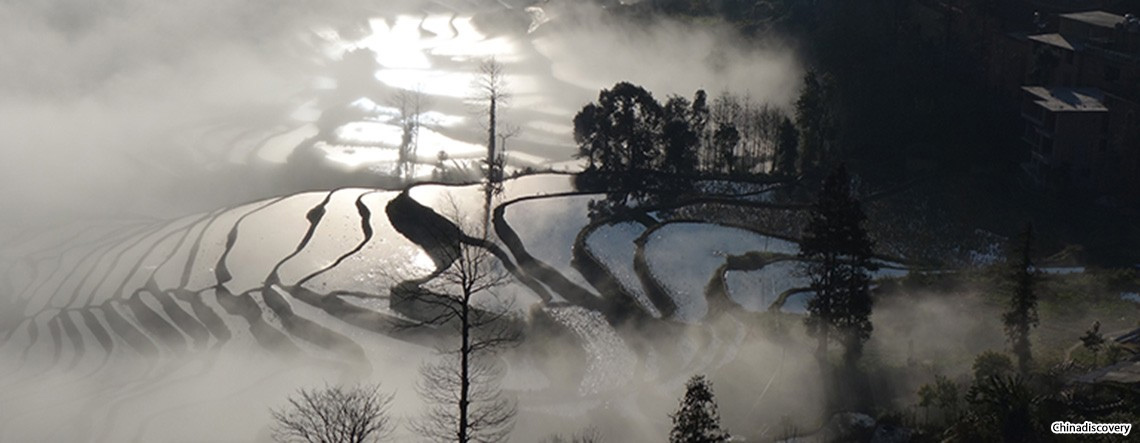
Dayun Yuan Zhuozhang.
A Cultural Hub
Today, Dayun Yuan Zhuozhang serves not only as a place of worship but also as a cultural hub for the region. It attracts scholars, artists, and history enthusiasts who seek to delve into the depths of Shanxi’s rich heritage. The temple complex is part of a broader route that includes other significant sites along the Zhuozhang River, such as Tiantai Temple and Longmen Temple, which collectively showcase the architectural splendor of the Five Dynasties and Song periods.
Visiting Dayun Yuan Zhuozhang
Visitors to Dayun Yuan Zhuozhang can expect a journey through time. The temple’s serene surroundings and rich historical context create an immersive experience. With a modest entry fee of 20 yuan, guests can explore the ancient halls and marvel at the meticulously preserved relics.
As you wander through this sacred space, take a moment to reflect on the stories that have unfolded within its walls—stories of devotion, artistic expression, and the indomitable spirit of the human quest for understanding and peace. Dayun Yuan Zhuozhang is not just a destination; it is a chapter in the vast narrative of Chinese civilization waiting to be discovered.

Dayun Yuan Zhuozhang.
Main Highlights: What You Absolutely Can’t Miss
Discover the Unmissable Highlights of Dayun Yuan Zhuozhang
When venturing into the picturesque Zhuozhang River Valley in Shanxi Province, one finds themselves enveloped in an extraordinary tapestry of history and culture. The area is renowned for its impressive concentration of ancient architecture, particularly from the Five Dynasties, Song, and Jin periods. Here are the must-visit highlights that provide a profound glimpse into China’s rich heritage.
1. Dayun Yuan Temple (大云院)
- Overview: This temple is a quintessential example of Later Jin Dynasty architecture, featuring the oldest existing Pu Pai Fang (a type of hall) in China. Inside, you can admire stunning murals that date back to the Five Dynasties, showcasing intricate artistry that has withstood the test of time.
- What to See: The Amitabha Hall stands out with its textbook-level structure, while the exquisite Seven Treasures Pagoda from the Later Zhou Dynasty graces the entrance.
- Entry Fee: ¥20
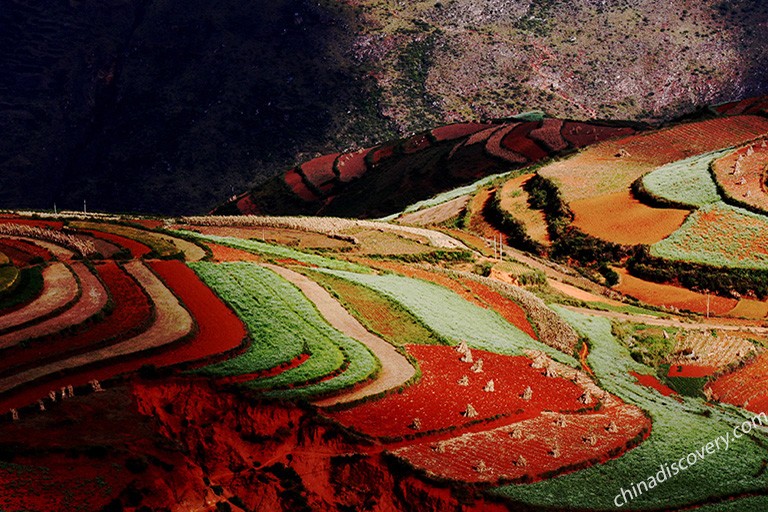
Dayun Yuan Zhuozhang.
2. Longmen Temple (龙门寺)
- Overview: Often revered as a “museum of ancient buildings,” Longmen Temple spans six dynasties, showcasing the evolution of architectural styles over centuries. The scenic backdrop of mountains enhances its majestic presence.
- Highlights: Don’t miss the well-preserved stone steps leading up to the temple, which offer breathtaking views and a serene atmosphere. The structures reflect the diverse influences of various dynasties, making it a treasure trove for history enthusiasts.
- Entry Fee: ¥20
3. Tiantai Nunnery (天台庵)
- Overview: With a history that dates back to the Five Dynasties, this charming small temple is notable for its upturned eaves, resembling a phoenix in flight. Its architectural elegance and serene setting make it a peaceful retreat.
- Entry Fee: ¥10
4. Yuanqi Temple (元气寺)
- Overview: Located on a terrace overlooking the river, Yuanqi Temple is home to a Sutra Pillar from the Tang Dynasty and a beautiful octagonal seven-story Qinglong Pagoda from the Northern Song Dynasty. The intricate wooden-like structure of the pagoda, with its massive brackets, is particularly impressive.
- Entry Fee: Free
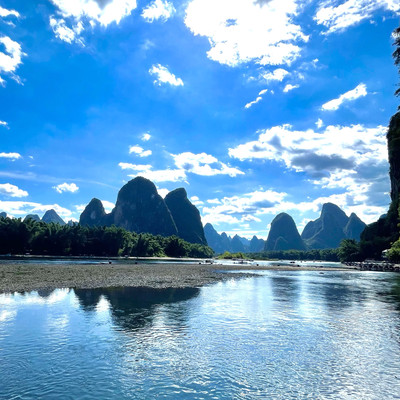
Dayun Yuan Zhuozhang.
5. Buddha Head Temple (佛头寺)
- Overview: Named for the mountain that resembles a Buddha’s head, this temple features the only remaining Song Dynasty murals and architecture in the area. The knowledgeable cultural relics protection staff provide insightful tours, enriching your visit with tales of ancient craftsmanship.
- Entry Fee: Free (Explanation fee of ¥10 per person)
6. Chunhua Temple (春华寺)
- Overview: This temple showcases the main hall from the Jin Dynasty and two Song Dynasty stone pagodas, presenting a glimpse into the architectural beauty of the era. It’s a serene spot to reflect on the cultural depth of Shanxi.
- Entry Fee: Free

Dayun Yuan Zhuozhang.
7. Huilong Temple (回龙寺)
- Overview: A small yet charming Jin Dynasty temple, Huilong Temple contains stunning murals from the Qing Dynasty as well, making it a perfect stop for those interested in the fusion of different historical styles.
- Entry Fee: Free
Practical Tips for Your Visit
- Best Time to Visit: Plan your journey between April and October for the best weather and stunning natural scenery.
- Getting Around: Consider renting a car or using local transport options to navigate the winding roads of the valley easily.
- Respect Local Customs: When visiting temples, maintain a respectful demeanor, and be mindful of photography rules.
Conclusion
Exploring the Zhuozhang River Valley is an enchanting experience that combines breathtaking landscapes with a deep dive into China’s architectural heritage. Each temple and site tells a story, inviting you to connect with the past while enjoying the serene beauty of this historic region. Don’t miss these highlights on your journey through this remarkable valley!
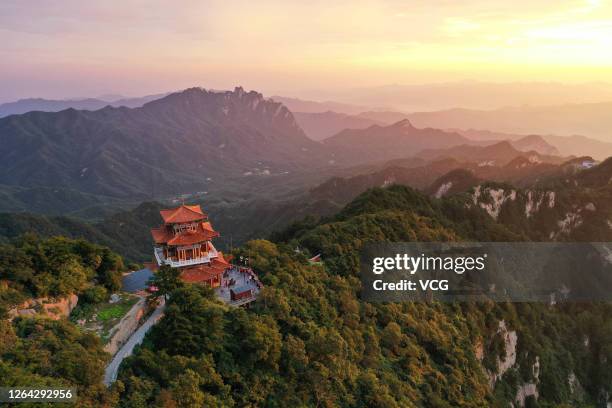
Dayun Yuan Zhuozhang.
Planning Your Visit: A Practical Guide
Your Essential Guide to Visiting Dayun Yuan Zhuozhang (浊漳河大云院)
Dayun Yuan Zhuozhang, nestled in the enchanting Zhuozhang River Valley of Shanxi Province, is a treasure trove for history enthusiasts and cultural explorers alike. This ancient site is renowned for its remarkable Five Dynasties murals and architectural masterpieces. Below, you’ll find everything you need to plan a fulfilling visit.
Getting There
Location: Dayun Yuan Zhuozhang is conveniently located near Pingshun County, Changzhi City, in Shanxi Province.
Transportation Options:
– By Air: The nearest major airport is in Taiyuan. From there, you can take a train or bus to Changzhi City.
– By Train: High-speed trains connect Taiyuan with Changzhi. The journey takes approximately 2-3 hours.
– By Car: Renting a car offers the flexibility to explore the scenic countryside at your own pace. Be cautious on mountain roads and ensure your vehicle is suitable for the terrain.
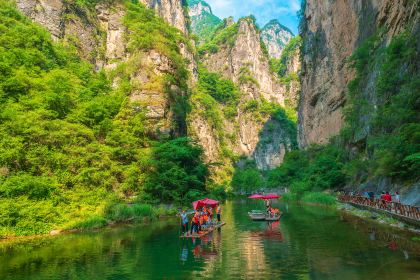
Dayun Yuan Zhuozhang.
Admission Details
- Ticket Price: Entry to Dayun Yuan Zhuozhang is a modest ¥20. This fee grants you access to the site and its historical treasures.
- Hours of Operation: Typically, the site is open from 8:00 AM to 5:00 PM. However, it’s advisable to check local listings for any seasonal changes.
Key Attractions
Dayun Yuan Zhuozhang is a part of a series of significant sites along the Zhuozhang River Valley. While exploring, make sure to include these highlights:
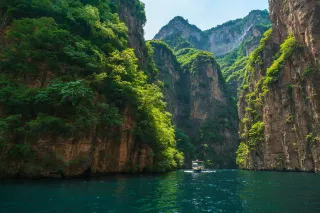
Dayun Yuan Zhuozhang.
- Amitabha Hall: A stunning example of Later Jin Dynasty architecture, home to the earliest existing Pu Pai Fang. Marvel at the intricate murals from the Five Dynasties period.
- Seven Treasures Pagoda: An exquisite pagoda dating back to the Later Zhou Dynasty, showcasing traditional craftsmanship.
- Cultural Insights: Engage with local preservationists who offer enriching insights into the architectural significance and historical context of the site.
Nearby Attractions
Combine your visit to Dayun Yuan Zhuozhang with these other culturally rich sites in the vicinity:
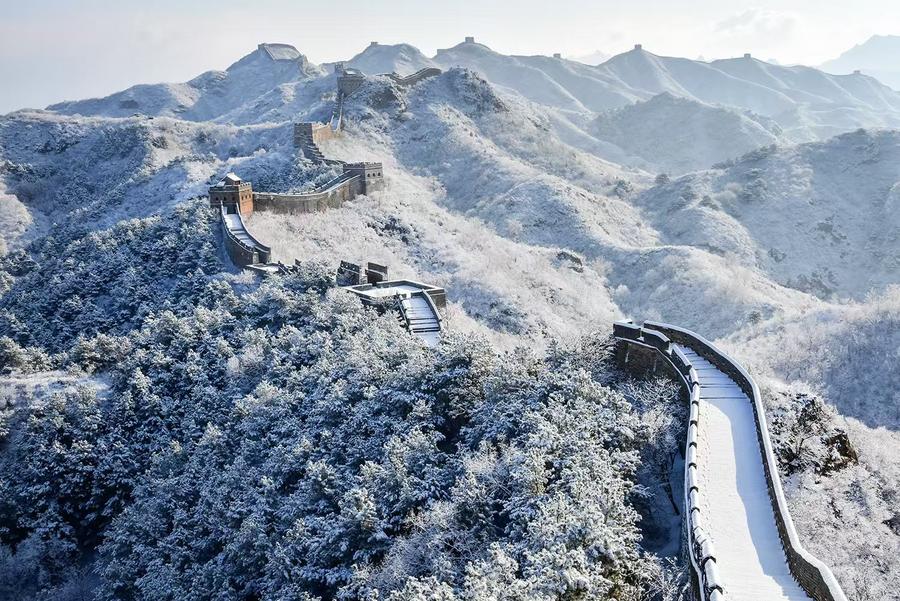
Dayun Yuan Zhuozhang.
- Tiantai Temple: A charming temple with disputed origins, previously attributed to the Tang Dynasty, now known as a Five Dynasties structure.
-
Admission: ¥10
-
Yuanqi Temple: Features a Sutra Pillar from the Tang Dynasty and a beautiful octagonal pagoda from the Northern Song Dynasty.
-
Admission: Free
-
Buddha Head Temple: Renowned for its Song Dynasty relics and captivating murals.
-
Admission: Free (explanation fee of ¥10/person)
-
Huilong Temple: A Jin Dynasty temple showcasing both historical architecture and Qing Dynasty murals.
- Admission: Free
Practical Tips
-
Best Time to Visit: The ideal seasons for visiting are spring and autumn (April to October), when the weather is mild and the scenery is at its most vibrant.
-
Dress Comfortably: Wear sturdy shoes suitable for walking, as you’ll be navigating various terrains and steps.
-
Respect Local Customs: When visiting temples, maintain a quiet demeanor, and follow any photography guidelines.
-
Safety Precautions: Be cautious when crossing roads, especially in mountainous areas where visibility may be limited.
Local Cuisine
Don’t miss the chance to indulge in the local food scene while visiting this cultural hub. Some must-try dishes include:
– Zhangzi Chaobing: Crispy fried cakes served with garlic paste.
– Huguan Lamb Soup: Best enjoyed in the winter months alongside traditional steamed buns.
– Local Night Markets: Explore the bustling Chenghuang Temple Snack Street for an authentic taste of Shanxi’s culinary delights.
Suggested Itinerary
Day 1:
– Morning: Arrival and visit to Dayun Yuan Zhuozhang.
– Afternoon: Explore Tiantai Temple and Yuanqi Temple.
– Evening: Enjoy dinner at a local restaurant and experience the night market atmosphere.
Day 2:
– Morning: Visit Buddha Head Temple and Huilong Temple.
– Afternoon: Take a scenic drive through the Zhuozhang River Valley, stopping for photos and local snacks.
– Evening: Return to Changzhi City for departure or further exploration.
Conclusion
Dayun Yuan Zhuozhang is more than just a historical site; it’s a window into the rich tapestry of Chinese culture and history. With its stunning architecture, serene landscapes, and vibrant local life, your visit promises to be both enlightening and enjoyable. Prepare to immerse yourself in the beauty and history of this remarkable destination!
Tickets: Prices, Booking, and Tips
When planning your visit to Dayun Yuan Zhuozhang (大云院浊漳河), it’s essential to have a clear understanding of ticket prices, booking options, and some handy tips to enhance your experience. Nestled in the scenic Zhuozhang River Valley, this site is a treasure trove of ancient architecture, making it a must-visit for those interested in Chinese history and culture.
Ticket Information
- Dayun Yuan (Dayun Temple):
- Price: ¥20 per person
-
Highlights: Home to the earliest existing Pu Pai Fang and stunning murals from the Five Dynasties period. The temple showcases exquisite architecture from the Later Jin Dynasty, making it a noteworthy stop on your journey.
-
Longmen Temple:
- Price: ¥20 per person
-
Highlights: This temple, spanning six dynasties, is renowned for its ancient stone steps and a rich history that makes it a veritable museum of ancient buildings.
-
Tiantai Temple:
- Price: ¥10 per person
-
Highlights: A beautiful small temple believed to date back to the Five Dynasties era, featuring upturned eaves reminiscent of a phoenix in flight.
-
Additional Temples in the Valley:
- Yuanqi Temple: Free entry. Notable for its Tang Dynasty Sutra Pillar and the Qinglong Pagoda.
- Buddha Head Temple: Free entry, with a small explanation fee of ¥10 per person for guided insights into the ancient architecture.
- Chunhua Temple and Huilung Temple: Free entry. Both contain remnants from the Jin and Song Dynasties, with unique architectural features.
Booking Options
While tickets can be purchased on-site at each temple, it’s advisable to arrive early, especially during peak travel seasons, to avoid long lines. For a more organized experience, consider booking guided tours that may include transportation and skip-the-line access to certain attractions. Many local travel agencies offer packages that cover not just Dayun Yuan but also other nearby historical sites within the Zhuozhang River Valley.
Tips for a Smooth Visit
-
Timing: Aim to visit during the cooler months (April to October) for the best weather. Early mornings or late afternoons provide beautiful lighting for photography and a quieter atmosphere for exploration.
-
Transportation: Public transport is limited, so consider renting a car or hiring a local guide for convenience. This allows you to explore the scenic routes at your leisure.
-
Dress Comfortably: Wear sturdy shoes, as the sites involve walking on uneven surfaces and stone steps. Bring a hat and sunscreen, especially during summer months.
-
Respect Local Customs: As these sites are places of worship and historical significance, maintain a respectful demeanor. Quietly observe the customs and refrain from loud conversations.
-
Photography: Many sites allow photography, but always check for any restrictions, especially inside temples.
By keeping this ticketing information and practical tips in mind, your visit to Dayun Yuan Zhuozhang promises to be both enriching and enjoyable, providing a deeper appreciation of China’s rich historical tapestry.
How to Get There: A Complete Transportation Guide
Navigating to Dayun Yuan Zhuozhang
Introduction to Dayun Yuan Zhuozhang
Dayun Yuan Zhuozhang (大云院浊漳) is a remarkable historical site nestled in the picturesque Zhuozhang River Valley, renowned for its stunning architecture and deep cultural significance dating back to the Five Dynasties period. As you plan your visit, understanding how to reach this enchanting destination will enhance your experience.
Getting There
1. Arriving by Air
The nearest major airport to Dayun Yuan Zhuozhang is Changzhi Airport (CZH), approximately 50 kilometers away. This airport connects to several cities in China, including Beijing and Shanghai.
- Airport Transfers: Upon arrival, you can opt for a taxi or pre-arranged car service to reach Dayun Yuan Zhuozhang. Expect a travel time of about one hour.
2. Traveling by Train
For those preferring the train, Changzhi Railway Station serves as the primary hub. The station is well-connected to major cities across China.
- From Changzhi Railway Station:
- By Taxi: A taxi ride from the railway station to Dayun Yuan Zhuozhang takes approximately 50 minutes.
- By Bus: Local public buses are available, but schedules can vary. It’s advisable to check in advance or use a taxi for more convenience.
3. Driving Directions
Renting a car gives you the flexibility to explore the surrounding areas at your own pace. The route from Changzhi to Dayun Yuan Zhuozhang is scenic but involves navigating some mountain roads.
- Driving Route: From Changzhi, take G209 to Pingshun County. Follow signs directing you to the Zhuozhang River Valley, where Dayun Yuan Zhuozhang is located.
- Travel Time: Approximately 1 to 1.5 hours, depending on traffic and road conditions.
Local Transportation
1. Public Transport
Once in the vicinity of Dayun Yuan Zhuozhang, local buses can help you access various nearby attractions. However, schedules may not be consistent, so be sure to check the latest routes and times.
2. Taxis and Rideshares
Taxis are readily available in Changzhi and can be hailed on the street or booked through local apps. Rideshare services may also be available, providing a convenient option for travelers.
3. Guided Tours
Consider joining a guided tour that includes Dayun Yuan Zhuozhang and other nearby historical sites, such as Longmen Temple and Fotou Temple. This can enhance your experience with knowledgeable guides who provide insights into the rich history and culture of the area.
Exploring the Area
1. Recommended Route
A well-planned route for visiting Dayun Yuan Zhuozhang is as follows:
- Start at Yuanqi Temple: Free entrance, this ancient site features a Tang Dynasty sutra pillar.
- Visit Tiantai Temple: A charming temple with a modest entrance fee of 10 yuan.
- Explore Dayun Yuan Zhuozhang: Marvel at the ancient murals and architecture for an entrance fee of 20 yuan.
- End at Longmen Temple: A must-visit site with a ticket price of 20 yuan, showcasing the grandeur of ancient Chinese architecture.
2. Scenic Spots
Take advantage of the stunning landscapes along the Zhuozhang River Valley. The area is dotted with numerous waterfalls and lush greenery, making it ideal for leisurely explorations and photography.
Final Tips
- Best Time to Visit: The ideal months to explore Dayun Yuan Zhuozhang are from April to October when the weather is pleasant, and the landscapes are at their most vibrant.
- Local Cuisine: Don’t miss the opportunity to savor local delicacies at nearby eateries, such as Lucheng Shuaibing and Huguan Lamb Soup.
- Cultural Sensitivity: As you visit temples and historical sites, maintain respectful behavior, observe signage regarding photography, and engage quietly.
With this guide, you are well-equipped to embark on an enriching journey to Dayun Yuan Zhuozhang, where history and natural beauty come together in an unforgettable experience. Safe travels!
Local Cuisine and Accommodation Nearby
When exploring the enchanting Dayun Yuan Zhuozhang (浊漳河大云院) and its surrounding historical treasures, indulging in the local cuisine and finding comfortable accommodations can enrich your cultural experience. Here’s a guide to the delectable dishes you can sample and the cozy places you can stay.
Culinary Delights
Noodle Specialties
- Lucheng Shuaibing: These delicate, paper-thin pancakes are typically filled with savory donkey meat or shredded potatoes. A must-try is at “Guo’s Lucheng Shuaibing,” known for its exceptional flavors.
- Zhangzi Chaobing: Crispy fried cakes served with garlic paste make for a delightful snack or side dish, perfect for a quick bite after a day of exploration.
- Huguan Lamb Soup: This hearty dish is best enjoyed with huangzheng (millet steamed buns) during the colder months, providing warmth and satisfaction.
Regional Dishes
- Shangdang Cured Donkey Meat: This local delicacy features firm-textured donkey meat, served cold or stir-fried, making it a unique culinary experience.
- Xiangyang Xingtang Sujiao: Vegetarian dumplings cooked in rich mutton broth offer a distinctive taste that showcases the region’s culinary creativity.
- Licheng Walnut Banquet: A feast of creatively crafted walnut dishes, this banquet is a treat for both the eyes and the palate.
Night Market Adventures
- Chenghuang Temple Snack Street: A vibrant hub for local bites, don’t miss out on the “Crispy Meat Soup,” a flavorful experience that encapsulates the essence of Shanxi street food.
- Bayi Square Area: Explore this bustling evening food market, where you can enjoy authentic local vibes and a variety of tempting dishes.
Accommodation Options
Budget-Friendly Choices
-
Chain Hotels: For a comfortable stay without breaking the bank, consider options like Home Inn and Hanting, priced around ¥120-180/night. Conveniently located near Bayi Square and Yingxiong Middle Road, they offer easy access to transport.
-
Rural Homestays: Experience the charm of the countryside by booking a farm stay near the scenic Taihang Grand Canyon, with prices ranging from ¥80-150/night. Many of these homestays include meals, allowing you to savor home-cooked local cuisine.
-
Hostels: If you’re traveling on a budget, the “Changzhi Taihang International Youth Hostel” offers beds for approximately ¥50. It’s a great place for backpackers looking to connect with fellow travelers.
Practical Tips
When planning your visit, consider the best seasons for travel—April to October provides stunning landscapes and pleasant weather. Be sure to respect local customs, especially in sacred spaces, and enjoy the culinary treasures and warm hospitality that this region has to offer.
With these recommendations, you’re well-equipped to make the most of your time at Dayun Yuan Zhuozhang, tasting the flavors of Shanxi while enjoying comfortable accommodations nearby. Happy travels!
Frequently Asked Questions
Frequently Asked Questions
1. What is Dayun Yuan Zhuozhang?
Dayun Yuan Zhuozhang (大云院) is a historic temple complex located in the scenic Zhuozhang River Valley of Changzhi, Shanxi Province. It is renowned for its well-preserved architecture from the Five Dynasties and Song periods, making it a significant site for those interested in Chinese history and Buddhist culture.
2. How do I get to Dayun Yuan Zhuozhang?
You can reach Dayun Yuan Zhuozhang by taking a bus or taxi from Changzhi City. The drive takes approximately 30 minutes. If you prefer to explore the area at your own pace, renting a car is also an option, though be cautious on the mountain roads.
3. What are the ticket prices and opening hours?
Tickets for Dayun Yuan Zhuozhang are priced at 20 yuan per person. The temple is typically open from 8:00 AM to 5:30 PM. It’s advisable to check for any seasonal changes in hours before your visit.
4. What are the must-see features within the temple?
Visitors should not miss:
– Amitabha Hall: A prime example of architecture from the Later Jin Dynasty, adorned with unique murals from the Five Dynasties.
– Seven Treasures Pagoda: Dating back to the Later Zhou Dynasty, this pagoda stands as an exquisite piece of craftsmanship.
– Mural Paintings: Although some are weathered, the remaining murals provide insight into the artistic styles of the time.
5. Is Dayun Yuan Zhuozhang suitable for families with children?
Absolutely! The serene atmosphere, along with the beautiful natural scenery surrounding the temple, makes it an ideal spot for families. The gentle walking paths and engaging historical context can captivate both young and old alike.
6. What should I wear when visiting?
Comfortable footwear is recommended, as you will likely do some walking on uneven surfaces. In addition, dress in layers as mountain weather can change quickly. Don’t forget to bring sun protection if you’re visiting in warmer months.
7. Are there any nearby attractions worth visiting?
Yes! The Zhuozhang River Valley is dotted with various historical sites, including:
– Tiantai Nunnery: A small yet beautiful temple featuring unique architecture.
– Longmen Temple: A larger complex with rich historical significance, also showcasing stunning ancient structures.
– Alpine Flowing Water Scenic Area: Perfect for a relaxing picnic amidst nature.
8. What cultural etiquette should I be aware of?
When visiting temples, it is essential to respect local customs. This includes maintaining a quiet demeanor, following any photography rules, and being mindful of other visitors. It’s also customary to bow slightly when entering certain sacred spaces as a sign of respect.
Final Thoughts on Your Trip
As you conclude your journey through the mesmerizing landscapes and rich cultural heritage of the Zhuozhang River Valley, it’s essential to reflect on the unique experiences that await in this historical treasure trove. From the ancient architectural wonders to the serene natural beauty, your visit to Dayun Yuan Zhuozhang and its surroundings offers a profound connection to China’s storied past.
A Journey Through Time
In this enchanting valley, you’ve walked in the footsteps of history, witnessing the elegance of structures that date back to the Five Dynasties and Song periods. Each temple, including the Dayun Zen Temple and the Longmen Temple, stands as a testament to the artistic and spiritual fervor of their time. The murals, intricate carvings, and architectural styles narrate stories of devotion, resilience, and the evolution of Chinese artistry.
Cultural Richness and Natural Beauty
Beyond the temples, the stunning backdrop of the Taihang Mountains and the gentle flow of the Zhuozhang River create a harmonious setting for contemplation and exploration. Engage with the warm hospitality of the local communities, savor the delightful regional cuisines, and immerse yourself in the natural wonders that punctuate your travels—from the cascading waterfalls to the vibrant flora.
Plan Ahead for Future Adventures
As you leave, consider planning a return trip to delve deeper into the lesser-known gems of the region. Each visit promises new discoveries, whether it’s exploring the diverse landscapes of the Taihang Grand Canyon or learning about the heroic tales of the Eighth Route Army.
Final Reflections
Traveling through the Zhuozhang River Valley not only enriches your understanding of Chinese history but also fosters a sense of peace and inspiration. As you carry the memories of ancient temples and breathtaking scenery with you, remember that the spirit of this remarkable region lives on in the stories you share and the experiences you cherish. Safe travels, and may your adventures continue to inspire a deeper appreciation for the beauty and history of China!